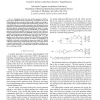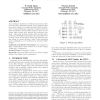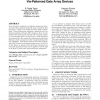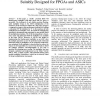42 search results - page 1 / 9 » Energy Recovering ASIC Design |
ISVLSI
2003
IEEE
13 years 9 months ago
2003
IEEE
Abstract— Dissipation in the clock tree and state elements of ASIC designs is often a significant fraction of total energy consumption. We propose a methodology for recovering m...
ISLPED
2004
ACM
13 years 10 months ago
2004
ACM
In an attempt to enable the cost-effective production of lowand mid-volume application-specific chips, researchers have proposed a number of so-called structured ASIC architectur...
DAC
2005
ACM
13 years 6 months ago
2005
ACM
We investigate differences in power between application-specific integrated circuits (ASICs) and custom integrated circuits, with examples from 0.6um to 0.13um CMOS. A variety of ...
DAC
2004
ACM
13 years 8 months ago
2004
ACM
In an attempt to enable the cost-effective production of lowand mid-volume application-specific chips, researchers have proposed a number of so-called structured ASIC architecture...
CDES
2006
13 years 6 months ago
2006
In this paper, a double precision IEEE 754 floating-point multiplier with high speed and low power is presented. The bottleneck of any double precision floatingpoint multiplier des...




